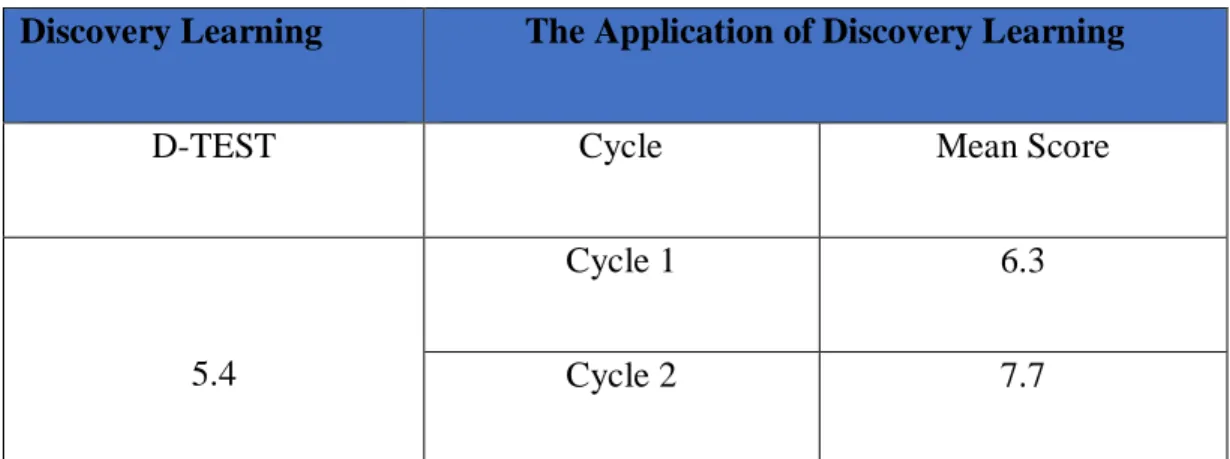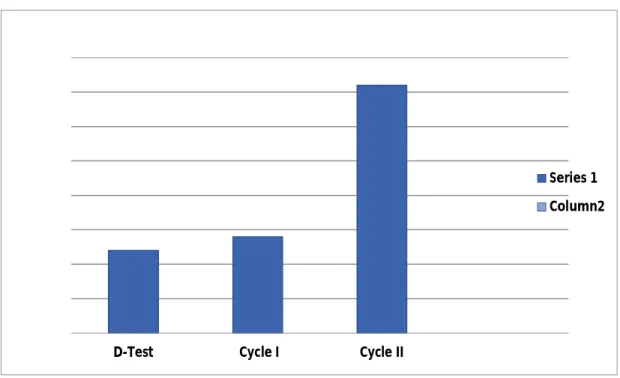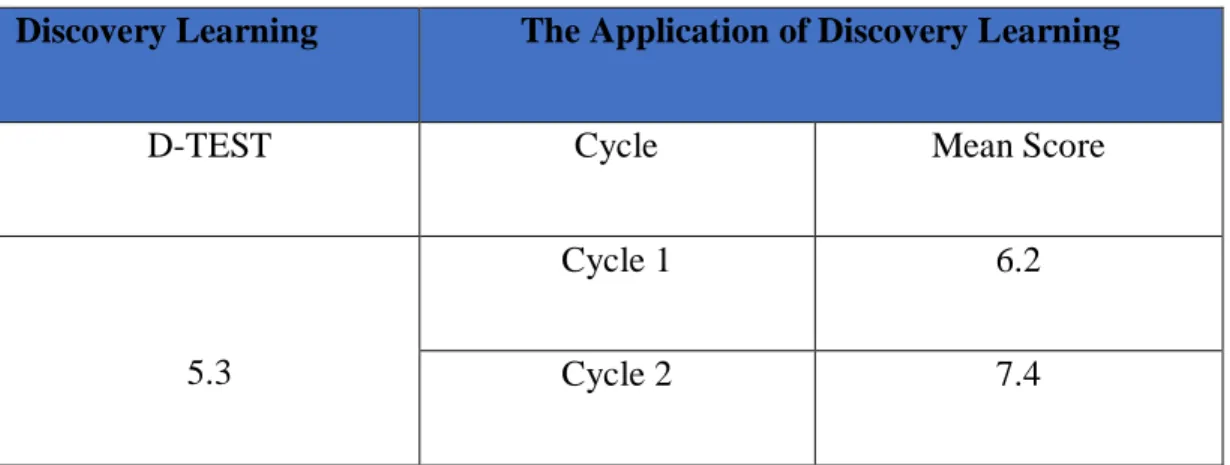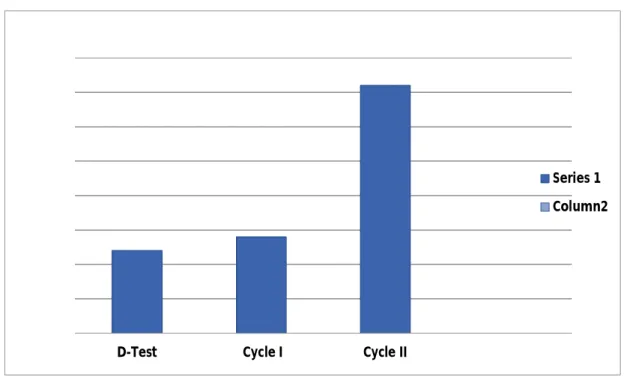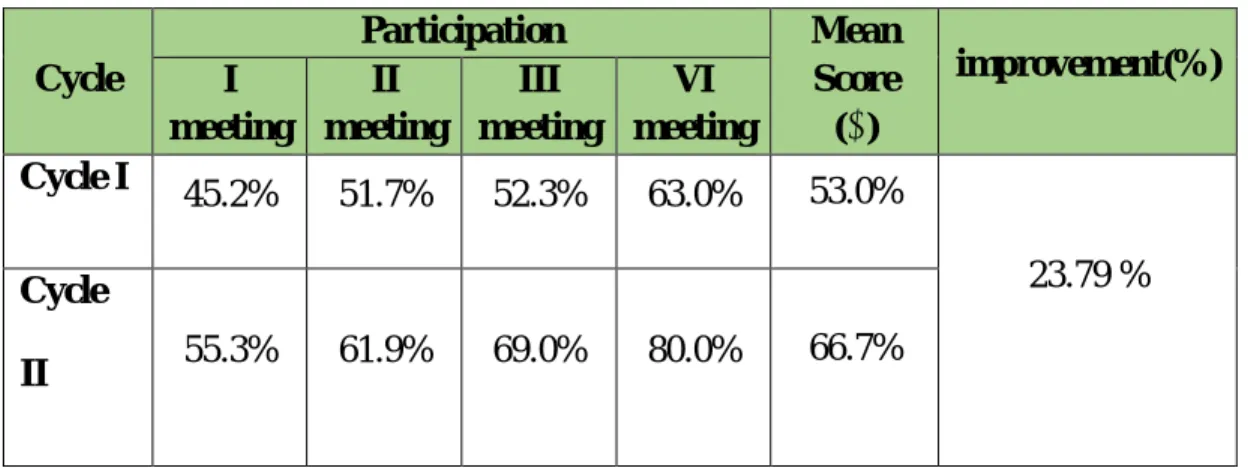One of the techniques to be offered here is the discovery learning method, where students learn to interact with the text they are reading. Based on the above explanation, the writer is interesting in leading the title “Improving Reading Comprehension through Discovery Learning of Students at SMA Muhammadiyah 7 Makassar. How Discovery Learning Method Improves Literal Reading Comprehension of First Year Students of SMA Muhammadiyah 7 Makassar.
With regard to the above problem statements, the objectives of this research are to find out the improvement of Literal Reading Comprehension through Discovery learning method of students in the first grade of the SMA Muhammadiya 7 Makassar. It was expected that the result of the study would provide useful information for the English teacher in general, and for the English teacher in particular for the MA. Discovery learning is a form of learning in which the learner constructs his own knowledge by experimenting with domains and deriving rules from the result of the experiment.
Reading is one of the most important skills in language learning besides listening, speaking and writing. From this point of view, it can be concluded that reading is an active thinking process where the reader tries to get information given by the author and understand what the purpose of the author really is. Silent reading tends to empower the reader to find out the meaning of the words.
This involves close reading of the text as the amount of comprehension should be high.
Reading Comprehension
Comprehension refers to the ability to make the author's or writer's speech usable and useful as it is read in contexts. Reaction is the action that requires consideration in relation to what was done by the author. Levels of integration in the ability to understand or understand through the concept to the writer's experience that can be useful as part of the reader's experience.
Literal comprehension represents the ability to understand information explicitly stated in the print and illustration. Students can recall, identify, classify and sequence detailed, facts and stated main ideas form a range of written materials and can interpret directions where this level of understanding involves surface meaning. She also needs to see the connection between ideas, for example how ideas are connected and also implied meaning of the ideas.
To understand literally, readers need only understand exactly what is being said or get the author's literal message. For a higher level of understanding, the reader engages in an exchange of ideas with the author and applies the reading to real-life situations. It is very important skills to support students' development in reading comprehension.
In this ability, students should be able to remember a fair proportion of the factual information or ideal expressed in a passage. In this ability, students must be able to pick out the important and relevant point, and students must be able to understand the meaning and significance of facts and ideas. In this ability, students must be able to derive certain things from information from the reading material read.
The most important thing in making the inference is the ability of the student to know what the author means in material. In this capacity, the students should be able to draw their conclusions from what they have read. And then the student must be able to reasonably and accurately evaluate or judge the material.
Conceptual Framework
Planning 2. Action
CHAPTER III
- The Variable and Indicators 1) Variable 1) Variable
- Research Procedure
- Planning
- Action
- Observation
- Reflection
- Subject of the Research
- Research Instrument
- Data Collection
- Technique of Data Analysis
- Rubric For Word meaning
- The Students’ mean score in Literal Comprehension
- Test Cycle I Cycle II
- The improvement of the student’ Achievement in Reading Comprehension through discovery learning
Through observation, we found student data about their presence and activity in the teaching and learning process. A test that is used to obtain detailed information about students' prior abilities and student achievement, the teaching and learning process ends. The data collection technique used in this research was as follows:. its purpose was to measure student participation during the teaching and learning process through Discovery Learning.
Calculating students' reading comprehension test mean scores using the following formula:. To analyze the students' participation in research towards the material and activities in the teaching and learning process according to the checklist. P = Percentage of students FQ = sum of all students' scores N = number of samples.
After analyzing the research, it showed that there was an improvement in students' reading comprehension through the Discovery Learning method in first graders. The research findings from the above table showed that there was an improvement in the average score of students from cycle I to cycle II, where in cycle I the average score of students is 6.3. and after the assessment in cycle II, the average assessment of the students was made. in the main ideas it becomes 7.7. Research findings from the above table showed that there was an improvement in the average score of students from cycle I to cycle II, where in cycle I the average score of students is 6.2. and after the assessment in cycle II, the average assessment of the students was made. in the word meaning becomes 7.4.
The following table shows the students' participation in learning reading comprehension using the discovery learning method from I. and II. The above table showed the process of student activity in each meeting table, the percentage of cycle I from the first meeting to the fourth meeting and 63.0%. The research findings from the above table showed that the result of student participation increased from 53.0% to 66.7% in II.
The discussion aimed at describing the students' reading comprehension focused on literal, detailed information and the meaning of words through discovery learning. In analyzing the students' performance, the researcher found that the students' main score in literal comprehension had improved through discovery learning. In the D-Test, the average score of the students was (5.3) in Cycle I, the average score of the students was low (6.0) and in Cycle II, classification was good.
The result of observing students' activities in the teaching and learning process was significantly improved by discovery learning in improving students' reading comprehension. This can be seen from the improvement of the average score of students' activities in the first cycle, namely 53.0% become in the second cycle.
